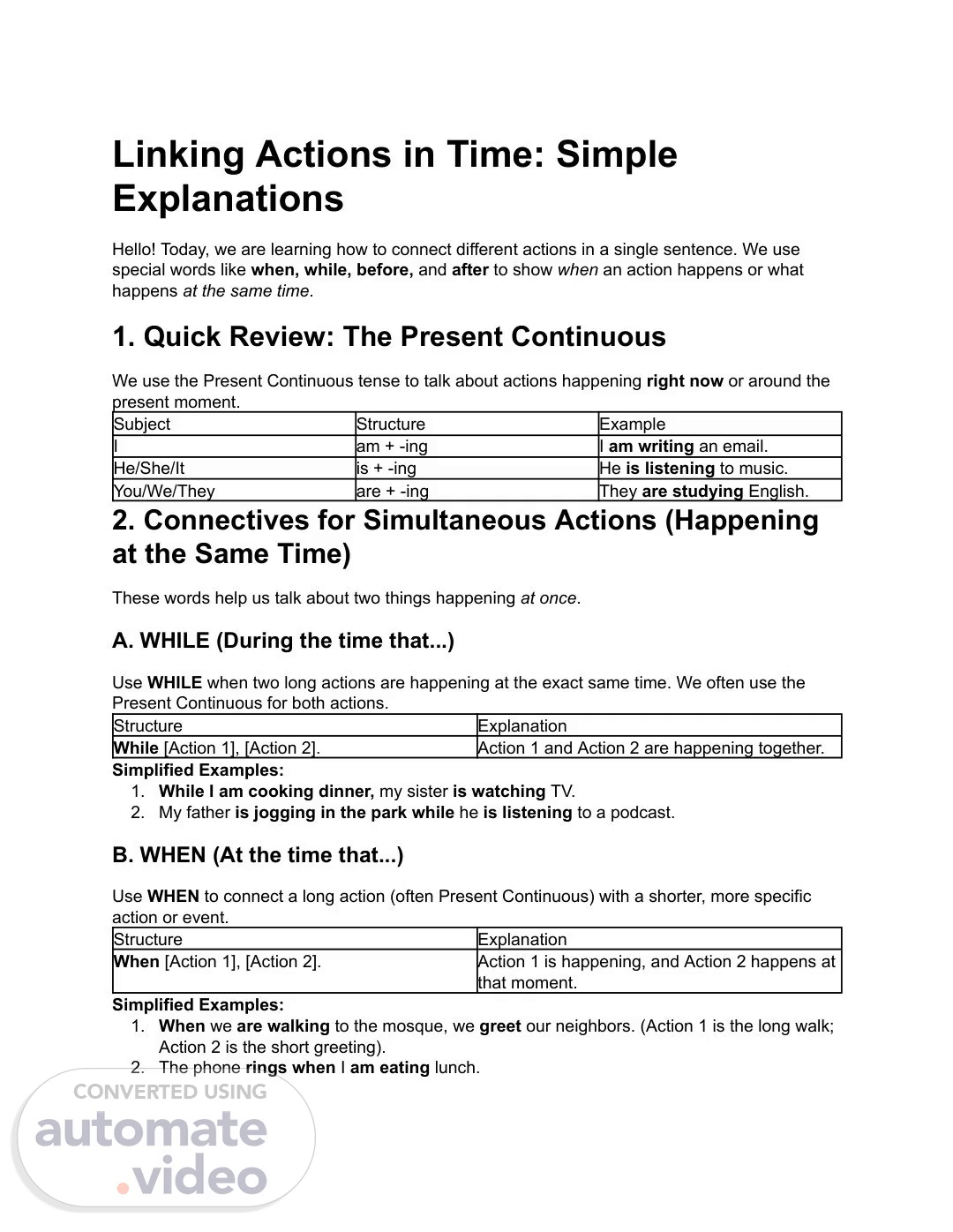Scene 1 (0s)
Linking Actions in Time: Simple Explanations Hello! Today, we are learning how to connect different actions in a single sentence. We use special words like when, while, before, and after to show when an action happens or what happens at the same time. 1. Quick Review: The Present Continuous We use the Present Continuous tense to talk about actions happening right now or around the present moment. Subject Structure Example I am + -ing I am writing an email. He/She/It is + -ing He is listening to music. You/We/They are + -ing They are studying English. 2. Connectives for Simultaneous Actions (Happening at the Same Time) These words help us talk about two things happening at once. A. WHILE (During the time that...) Use WHILE when two long actions are happening at the exact same time. We often use the Present Continuous for both actions. Structure Explanation While [Action 1], [Action 2]. Action 1 and Action 2 are happening together. Simplified Examples: 1. While I am cooking dinner, my sister is watching TV. 2. My father is jogging in the park while he is listening to a podcast. B. WHEN (At the time that...) Use WHEN to connect a long action (often Present Continuous) with a shorter, more specific action or event. Structure Explanation When [Action 1], [Action 2]. Action 1 is happening, and Action 2 happens at that moment. Simplified Examples: 1. When we are walking to the mosque, we greet our neighbors. (Action 1 is the long walk; Action 2 is the short greeting). 2. The phone rings when I am eating lunch..
Scene 2 (1m 5s)
3. Connectives for Sequential Actions (Order of Events) These words show the order in which two things happen. They usually connect two simple actions, but you must know the order. A. BEFORE (In advance of) BEFORE tells us that the first action must happen before the second one. Structure Explanation [Action 1] before [Action 2]. Action 1 \rightarrow Action 2 Simplified Examples: 1. Before leaving for work, my mother drinks coffee. (First, she drinks coffee. Then, she leaves.) 2. I clean my room before I start my homework. B. AFTER (Following the event of) AFTER tells us that the first action is finished, and then the second action begins. Structure Explanation After [Action 1], [Action 2]. Action 1 is complete \rightarrow Action 2 begins Simplified Examples: 1. After harvesting the vegetables, the farmer rests. (First, the harvest is complete. Then, the farmer rests.) 2. The students take a break after the teacher finishes the lesson. Key Takeaway: Tense Check Remember that BEFORE and AFTER often use the Simple Present tense because they talk about habits, routines, or general truths. WHILE and WHEN are the words that are most commonly used to show how one action in progress (Present Continuous) relates to another action..
